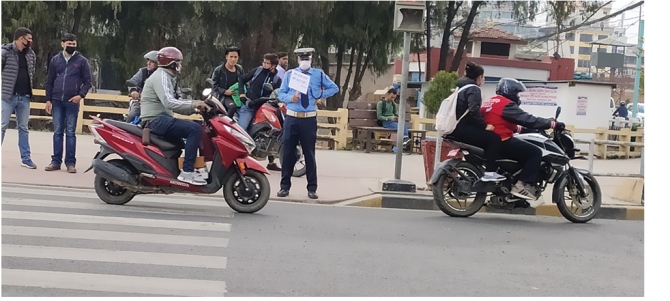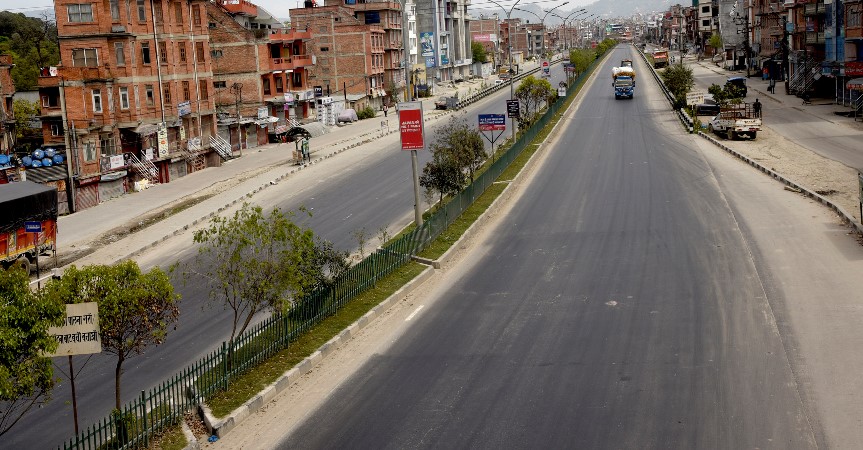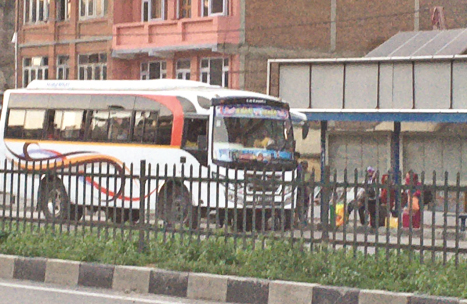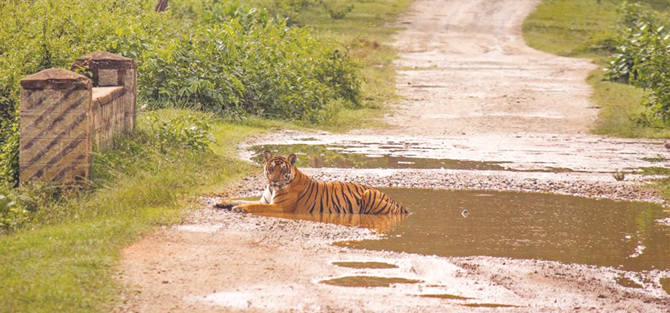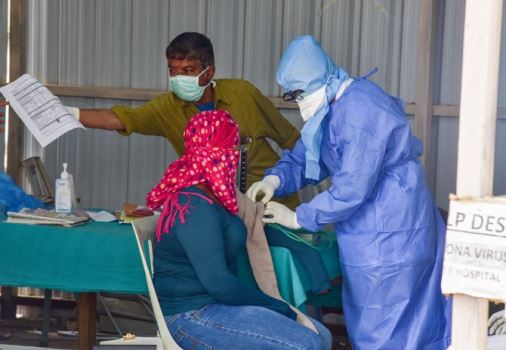Human-Animal Conflicts Galore
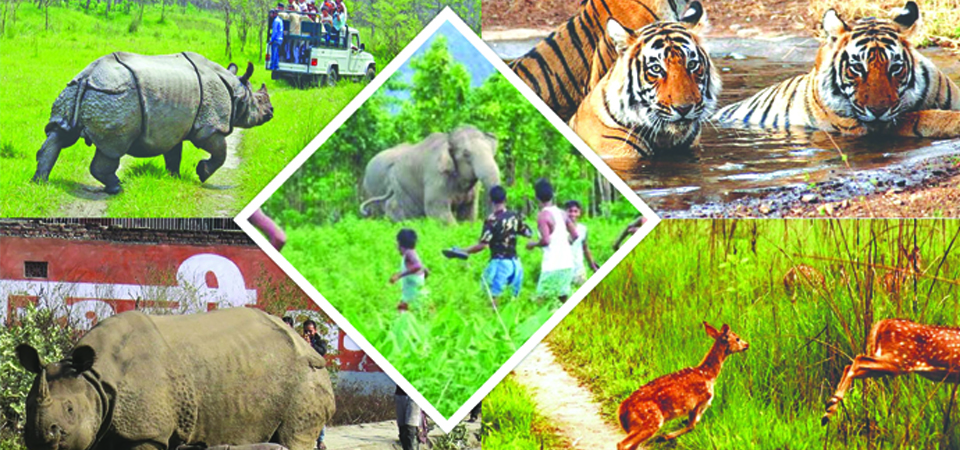
Indira Aryal
The conflict between people and wild animals has gone up in recent years, posing mortal threats to both animals and humans. Rare and endangered animal species such as Royal Bengal Tigers and one-horned rhinos and elephants, among others, and many people are being killed because of this growing conflict between human and wild creatures.
The rise in this form of conflict has resulted mainly from human settlement expansion and shrinkage of natural habitats of wild animals. Also, perpetration of poaching for smuggling animal hides too has posed a serious risk to our wildlife, most those listed as rare and endangered species.
Habitat Encroachment
Encroachment of wildlife habitats, lack of sufficient food (prey species) and threats the animals face from human beings are the main source of recurring conflict between humans and wildlife.
In a recent event on January 2, a speeding car driven by a 53-year-old man killed a tigress near Parsa National Park (PNP) on the Pathlaiya-Hetauda section of the East-West Highway. The wild cat was hit in the middle of the road while it was crossing it and had died on the spot.
Similarly, on the night of January 1, 2020, a woman who was pillion riding a motorcycle was attacked and killed by a tiger in the Bardiya National Park (BNP)-section of East-west Highway.The person driving the motorbike sustained serious injuries.
Earlier, two people – a man and a woman – were killed in tiger attacks in the same national park area. After the episodes, the national park prohibited people from travelling on bicycle and motorcycle during night times in the area. The BNP sources said they were searching for the killer tiger to bring it under control.
An elephant was electrocuted to death in Saptari's Kanchanrup Municipality on November 22, 2020. The elephant was electrocuted by 33,000 KV high-electricity after its body was dragged onto a power pole in Ward No. 5 of the municipality.
According to police, the elephant died in an electric trap set by a local in the municipality previous day. According to Saptari Police Spokesperson Bhubaneswar Shah, the male elephant from Koshi Tappu Wildlife Reserve (KTWR) died due to electric shock while entering the village.
A deer was killed in a motorcycle collision in Sarlahi district on January 5, 2021. The deer died on the spot when it was hit by a motorcycle (Province 1-02-042 P.4009), which was heading to south from the north on the New Road-Barhathwa road section in Bagmati Municipality-3.
Reasons for Conflict
According to Dr Dinesh Neupane, wildlife expert and programme director at the Resource Himalaya Foundation, there has been no research on conflict mitigation while planning for wildlife population increments. “We are only talking about doubling the tiger population to meet the global target, but lacking behind the habitat expansion and management. We never talked about human and animal conflict when committing to double the tigers by 2022,” he said.
According to Nepal's 2018 Tiger Census, the country's tiger population has touched 235.
Humans are not the primary prey of tigers. But when they feel scared by approaching humans or when they are moving around with their cubs and run into a person, then they attack human beings with a sole motive of protecting themselves and cubs.
The recent incident of Bardiya that attacked the pillion rider is a new incident of its kind and unnatural, so there should be a focus on habitat management and enlargement for the dominant carnivores of nature.
The major highway of the nation, the East-West, runs through the BNP and PNP. The traffic movement along the East-West Highway that passes through the PNP, Chitwan National Park (CNP), Banke National Park (BANP), BNP and Shuklaphanta National Park (SNP) disturb and affect the wild creatures living in the parks. However, there is no management of speed breakers, crossing bridges and underpasses for wild animals, which could help protect animals from meeting accidents.
Only the BNP has put in place speed limitation measures, while other parks have no such systems. The incident in which a speeding vehicle killed the female tiger in the PNP area indicated the unmanaged status of our highways for wild animals.
Habitat Expansion
With the global commitment made in 2010 to double the tiger population by 2022, BNP has added a habitat expansion programme. The government is continuously working with grassland management and habitat expansion, and to increase the prey species for tigers. In BNP, there are 95 individual prey species in one square kilometre for tigers.
Wild animals feel intimidated in their surroundings when they see the people’s movement. The encroachment near the park areas is slimming down the habitat of wild animals such as tigers and rhinos. The surge in human-wild animal face-off has taken place because of the habitat's encroachment.
The construction of infrastructures like roads and canals in the park and forest areas has created more problems for animals as they often encounter humans at such places. The human settlements near forests and protected parks have given rise to the threats to the people. The casualties and destruction of properties have taken place just because of lack of sufficient habitat and prey species to the wild animals.
The animals come out of the reserved areas in search of food. The hungry animals are often angry and are ready to attack whoever comes near them. The authority should therefore focus on habitat expansion and increase the number of prey species to minimise such incidents.
Animal Deaths
According to the annual report of the Department of National Park and Wildlife Conservation (DNPWC), 108 wild animals died in road accidents in three major national parks — Bardiaya, Parsa and Banke — in the fiscal year 2019-20.
In the fiscal year 2019/20, 591 wild animals died in 16 national parks and a conservation area. Of the total deaths, road accidents caused 108 and natural causes 437.
A total of 35 wild animals in BNP, 15 in the PNP and 48 in the BNP died in road accidents. Besides touching some areas of Banke and BNP, the East-West Highway passes through the core areas of the BNP.
As per the report, one and two wild animals died in road accidents in Chitwan National Park (CNP) and Koshi Tappu Wildlife Reserve (KTWR) area, respectively.
Apart from animal death, 33 persons were killed while 67 were injured nominally and 110 severely in wild animal's attack.
Similarly, 439 wild animals were rescued, and compensation worth Rs. 16.6 million was distributed to the people affected by the wild animals’ attacks.
Likewise, 2,608 people were arrested for their involvement in several forests and wildlife crimes during the year. The number of wildlife deaths from vehicle crashes could be even higher, as some incidents are not included in the statistics as they might have gone unnoticed.
Conservation
According to the latest census in 2018, there are 235 breeding tigers in Nepal and the country is set to become the first of 13 countries to double its tiger population by 2022.
Sources said Nepal is on course to become one of the first tiger range countries to fulfil its commitment and achieve the target of doubling tiger population by 2022, set during the Global Tiger Summit in Russia in 2010. Nepal’s tiger population was 121 at that time.
Nepal has been carrying out successful tiger conservation since the 1970s. Over the years, once dwindling, the tiger population in lowlands has recovered. However, significant challenges remain ahead, particularly ensuring sufficient secure interconnected habitats for the species to be conserved over the long term, along with minimal human-tiger conflict, he said.
On a special request by the Government of Nepal, a study was conducted to establish a method for estimating tiger ecological carrying capacity (ECC) of a site and provide a baseline ECC estimate of tigers in the Chitwan-Parsa Complex, a priority tiger conservation landscape.
As part of this study, a systematic line-transect distance sampling survey provided density estimates for all ungulate species in the plains and Chure hills of the Chitwan-Parsa Complex.
The Chitwan-Parsa Complex can support a significant population of approximately 175 tigers, with Chitwan able to support 136 tigers and Parsa 39 tigers. Currently, the CNP has about 93 tigers and the PNP 18 tigers.
Compensation
According to an article published in this daily and written by Roshna Chauhanthe, the government in 2010 endorsed Wildlife Damage Relief Guidelines 2066 and today we have Wildlife Relief Guidelines 2069 with a 3rd amendment in 2073 to provide support to wildlife victims.
The monetary compensation amount for human casualties is up to Rs. 200,000 per person and a maximum of Rs. 20,000 for a person sustaining a minor human injury. In case of the death of victims, they shall provide the family of a victim with 1,000,000.
The guidelines have included schemes for monetary payoff for loss of domestic animals and property, and the authority has arranged scholarship programmes for the children of victims.
Grassland Management
According to the National Biodiversity and Action Plan, currently, over 22 per cent of the country’s total land area is under protection, which is one of the highest in Asia.
The CNP has 8,955.2 hectares, which is 9.6 per cent of the total core area. An additional 1541.9 hectares of grassland habitat occur in the buffer zone area, according to a 2016 report. However, the PNP has about 530 hectares of grassland habitat, which is only 0.85 per cent of the total core area in 2018.
Wildlife experts believe the lack of plentiful water and fertile grassland habitat could be a major stress for prey populations in many reserved areas that might have regulated population at a low density.
The carrying capacity of the tiger primarily depends on the availability of the prey species. Prey availability depends on the availability of productive patches of habitats, mainly the grasslands, as most of the prey base in Chitwan- Parsa Complex is grassland dependent.
This offers an opportunity for park management to enhance the current-carrying capacity of the tigers up to the threshold level. Availability of space, inter-specific and intra-specific relationships within the ecosystem together with the availability of food resources could determine the threshold level of ECC.
(Aryal works at The Rising Nepal)
Recent News

Do not make expressions casting dout on election: EC
14 Apr, 2022
CM Bhatta says may New Year 2079 BS inspire positive thinking
14 Apr, 2022
Three new cases, 44 recoveries in 24 hours
14 Apr, 2022
689 climbers of 84 teams so far acquire permits for climbing various peaks this spring season
14 Apr, 2022
How the rising cost of living crisis is impacting Nepal
14 Apr, 2022
US military confirms an interstellar meteor collided with Earth
14 Apr, 2022
Valneva Covid vaccine approved for use in UK
14 Apr, 2022
Chair Prachanda highlights need of unity among Maoist, Communist forces
14 Apr, 2022
Ranbir Kapoor and Alia Bhatt: Bollywood toasts star couple on wedding
14 Apr, 2022
President Bhandari confers decorations (Photo Feature)
14 Apr, 2022



